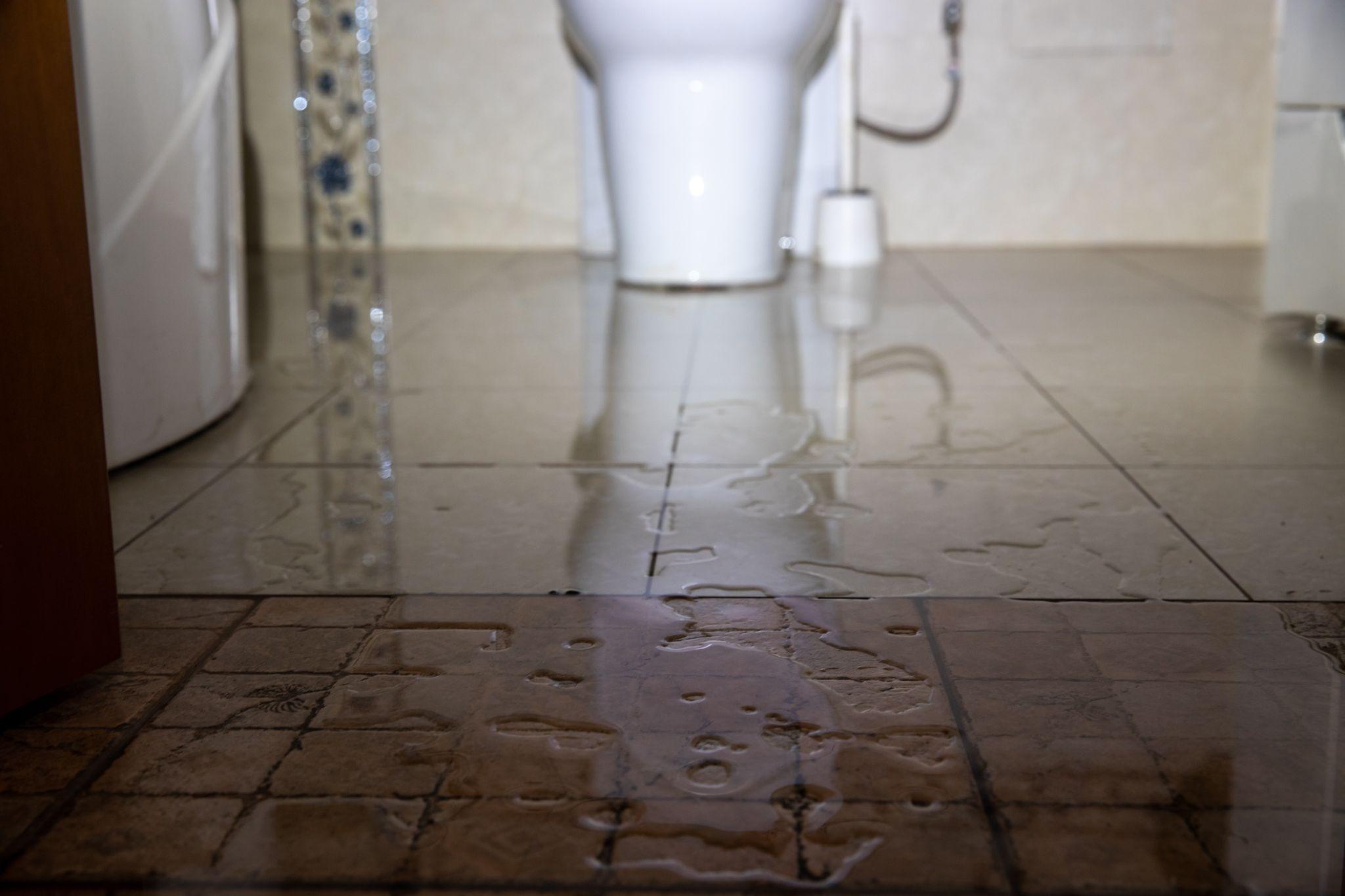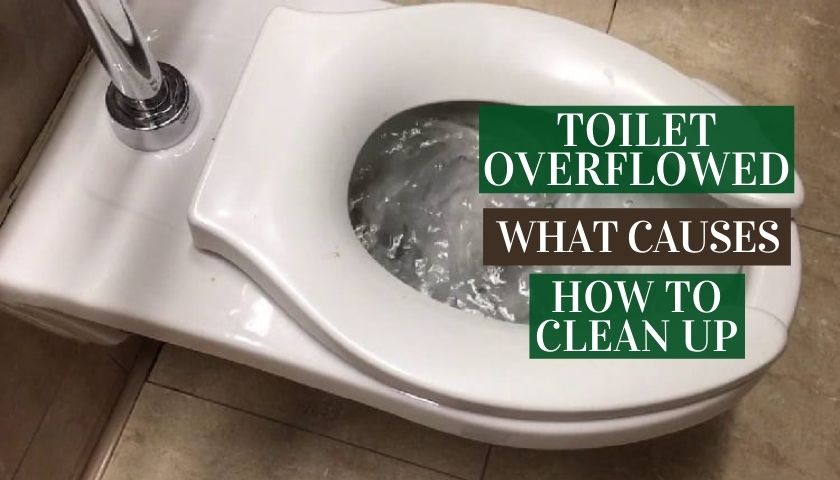Understanding the Cause: Toilet Overflowed Now Bathroom Smells

A toilet overflow is a common plumbing problem that can be caused by a variety of factors. Understanding the cause of the overflow is essential for addressing the issue effectively and preventing future occurrences.
Common Causes of Toilet Overflows
Toilet overflows can occur due to various factors, but some common causes are:
- Clogged Drain: A blockage in the toilet drain can prevent water from flowing out properly, leading to a backup and overflow. This blockage can be caused by foreign objects, such as toys, paper towels, or even excessive toilet paper.
- Faulty Flapper: The flapper is a rubber seal that prevents water from constantly flowing into the toilet bowl. If the flapper is worn out, cracked, or not sealing properly, water can continuously leak into the bowl, eventually overflowing.
- Overfilled Toilet Bowl: A toilet bowl that is filled too high can easily overflow, especially if the flapper is not working properly. This can be caused by a faulty fill valve, which controls the water level in the tank.
- Clogged Vent: A clogged vent can create pressure buildup in the plumbing system, leading to toilet overflows. This is because the vent allows air to enter the system, preventing a vacuum from forming that could cause backups.
- Broken Toilet Bowl: A cracked or chipped toilet bowl can allow water to leak out of the bowl, potentially leading to an overflow.
Potential Scenarios for the Overflow
Based on the information provided, it is possible that the toilet overflow occurred due to one or a combination of the following scenarios:
- Clogged Drain: If there was a recent instance of flushing something that could cause a blockage, such as a large amount of toilet paper or a foreign object, this could be the culprit.
- Faulty Flapper: If the toilet has been experiencing unusual noises, such as a constant running sound or a slow flush, this could indicate a worn-out or malfunctioning flapper.
- Overfilled Toilet Bowl: If the toilet bowl has been consistently filled higher than usual, this could indicate a faulty fill valve. The fill valve may be malfunctioning or misadjusted, allowing too much water to enter the tank.
Signs Indicating the Cause of the Overflow
The following signs can help determine the cause of the toilet overflow:
- Unusual Noises: A constant running sound, gurgling, or a slow flushing sound can indicate a faulty flapper or a clogged drain.
- Water Pressure Changes: A sudden decrease in water pressure could suggest a clogged vent or a problem with the main water supply line.
- Water Level Changes: If the toilet bowl is consistently filling higher than usual, it could indicate a faulty fill valve.
Immediate Actions

A flooded bathroom can pose a significant health hazard, and prompt action is crucial to mitigate damage and ensure safety. This section Artikels immediate steps to address an overflowing toilet, emphasizing the importance of stopping the water flow and preventing further damage.
Stopping the Water Flow
The first priority is to stop the water flow and prevent further flooding. Here’s how to do it:
- Turn off the water supply: Locate the toilet’s shut-off valve, usually found behind the toilet or on the wall nearby. Turn the valve clockwise to shut off the water supply. If the valve is stuck or broken, you may need to turn off the main water supply to your home.
- Flush the toilet: Once the water supply is off, flush the toilet to remove any remaining water in the bowl. This will help reduce the amount of water on the floor.
Preventing Further Damage
Once the water flow has stopped, it’s important to take steps to prevent further damage:
- Absorb excess water: Use towels, sponges, or a wet/dry vacuum to absorb the excess water on the floor. It’s crucial to remove as much water as possible to prevent water damage to the flooring and surrounding areas.
- Open windows and doors: To help air out the bathroom and prevent mold growth, open windows and doors to allow fresh air to circulate.
- Protect electrical outlets and appliances: Avoid touching any electrical outlets or appliances that may have come into contact with water. If you suspect any electrical hazards, disconnect power to the bathroom immediately and call an electrician.
Safe Handling of Contaminated Water
Overflowing toilets can release contaminated water, posing health risks. Here’s how to handle the situation safely:
- Wear protective gear: When cleaning up contaminated water, wear rubber gloves, boots, and a face mask to protect yourself from bacteria and viruses.
- Dispose of contaminated materials properly: Use a separate trash bag for all materials that have come into contact with contaminated water, including towels, sponges, and cleaning supplies. Dispose of these materials in a sealed container to prevent further contamination.
- Avoid contact with contaminated water: Do not allow children or pets to come into contact with the contaminated water or the affected area until it has been thoroughly cleaned and disinfected.
Cleaning and Odor Removal

After addressing the immediate issue of the toilet overflow and taking steps to prevent further damage, the next priority is to thoroughly clean the bathroom and eliminate the lingering odor. This process involves a multi-faceted approach, focusing on specific cleaning solutions and techniques for different surfaces.
Cleaning and Disinfecting Surfaces, Toilet overflowed now bathroom smells
The bathroom’s surfaces, including tile, grout, and carpet, require a thorough cleaning to remove the lingering odor and potential bacteria.
- Tile and Grout: Mix a solution of equal parts white vinegar and water in a spray bottle. Apply the solution to the tile and grout, allowing it to sit for 10-15 minutes. Scrub the surfaces with a stiff-bristled brush, paying particular attention to the grout lines. Rinse the surfaces thoroughly with water and dry them with a clean cloth.
- Carpet: If the carpet has been affected by the overflow, it’s crucial to address the odor and potential mold growth. Use a carpet cleaner specifically designed for odor removal and follow the manufacturer’s instructions. For stubborn odors, consider using a baking soda paste. Apply the paste to the affected area, let it sit for 30 minutes, and then vacuum thoroughly. Ensure the carpet is completely dry after cleaning.
Odor-Eliminating Products
Various products effectively combat unpleasant odors. The following table Artikels several options and their applications:
| Product | Application |
|---|---|
| Baking Soda | Sprinkle baking soda on carpets, rugs, and upholstery to absorb odors. Leave it for several hours, then vacuum thoroughly. |
| Activated Charcoal | Place bowls of activated charcoal in affected areas to absorb odors. Replace the charcoal regularly. |
| Essential Oils | Add a few drops of essential oils, such as lavender or citrus, to a spray bottle filled with water. Mist the air to neutralize odors and freshen the bathroom. |
| Air Purifier | Use an air purifier with a HEPA filter to remove airborne particles and odors. |
Toilet overflowed now bathroom smells – The stench of sewage hangs heavy in the air, a constant reminder of the overflowing toilet. While I contemplate the plumbing disaster, I can’t help but think of the simple elegance of salter doctor style mechanical bathroom scales , a timeless design that seems untouched by the chaos of modern life.
Perhaps, after the plumber arrives, I’ll find solace in the quiet precision of those scales, a small reminder of order in a world suddenly turned upside down.
The toilet overflowed, and now the bathroom smells like a stagnant pond. It’s a nightmare, especially with a jack and jill style bathroom , where the smell can easily permeate into the other room. I’m hoping to get this fixed quickly, before the stench reaches the bedrooms!